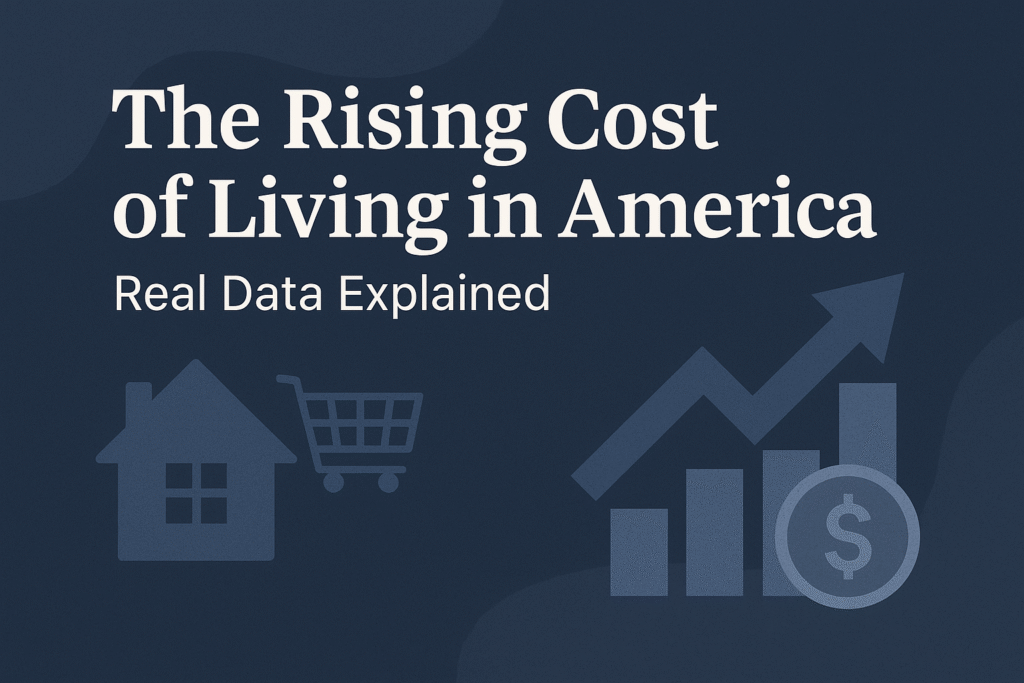Every time the Federal Reserve makes an announcement, Wall Street holds its breath — but so should Main Street.
Even if you’re not an investor or economist, the Fed’s decisions directly affect your daily life: your mortgage rate, credit card balance, savings account, and even the price of your groceries.
In 2025, as inflation slowly cools and interest rates begin to adjust, understanding how the Fed works has never been more important.
Let’s break it down in plain English.
1. What the Federal Reserve Actually Does
The Federal Reserve (or simply “the Fed”) is the central bank of the United States.
Its mission? To keep the economy stable by balancing three things:
- Employment – helping create jobs.
- Prices – keeping inflation low and steady.
- Interest rates – setting the cost of borrowing money.
Think of it like this:
The Fed is the “thermostat” of the economy — turning the heat up when growth slows, and cooling it down when inflation runs hot.
2. Interest Rates: The Fed’s Main Tool
The Fed doesn’t directly set your credit card or mortgage rate, but it does control the federal funds rate — the rate banks charge each other to borrow overnight.
When the Fed changes this rate, everything else in the economy adjusts:
- Credit card interest rates
- Mortgage and auto loan rates
- Savings account yields
- Even stock and crypto prices
💡 In short:
When rates go up, borrowing gets more expensive but saving becomes more rewarding.
When rates go down, borrowing gets cheaper but saving earns less interest.
3. How Rate Hikes Affect You
Let’s say the Fed raises interest rates to fight inflation (like it did in 2022–2024).
Here’s how it hits your wallet:
- Mortgages: Monthly payments rise on variable-rate loans. Fixed-rate mortgages become pricier to obtain.
- Credit Cards: APRs (Annual Percentage Rates) increase within weeks, making debt more expensive.
- Car Loans: Lenders pass along the higher rates, raising monthly payments.
- Personal Loans: Harder to qualify for, with stricter credit requirements.
📊 Example:
A 30-year fixed mortgage that cost $1,800/month in 2021 could easily exceed $2,400/month during peak rate periods.
The goal? Slow down spending and cool inflation — but it also cools your wallet.
4. How Rate Cuts Help (and Hurt)
When the Fed lowers rates, borrowing gets easier — but inflation often follows.
Positive effects:
✅ Cheaper loans (great for buying homes or starting businesses).
✅ Higher stock market confidence (investors seek returns).
✅ Easier debt repayment and refinancing.
Downsides:
❌ Lower savings account interest.
❌ Asset bubbles (stocks, crypto, real estate may overheat).
❌ Inflation risk if demand spikes too fast.
So, while rate cuts feel good short-term, they can reignite inflation if done too soon.
5. The Fed and Inflation: A Constant Tug of War
Inflation is the Fed’s biggest challenge.
Its target is around 2% annual inflation, but after the pandemic, prices soared well above that level.
To fight this, the Fed raised rates aggressively in 2023–2024, slowing the economy without tipping it into a full recession.
By 2025, inflation is easing, and the Fed faces a delicate decision:
“When should we start cutting rates without reigniting price spikes?”
Your rent, groceries, insurance, and fuel costs all depend on that balance.
(Related: U.S. Inflation Forecast: What to Expect in 2025)
6. How It Impacts Savings and Investments
- Savings accounts: Good news — banks usually increase yields when rates rise. Some online savings accounts now pay over 4.5% APY.
- Stocks: Higher rates often hurt stock prices because investors prefer low-risk bonds.
- Bonds: When the Fed raises rates, bond values drop — but new ones pay better interest.
- Real estate: Higher rates slow demand and stabilize prices after years of overgrowth.
🧠 Smart move:
During high-rate periods, diversify — keep a mix of cash, short-term bonds, and dividend stocks to protect against volatility.
7. What to Expect in 2025
Most analysts expect 2–3 minor rate cuts during 2025, as inflation trends closer to 2.5%.
This means:
- Gradual relief in mortgage and loan costs.
- Slight dip in savings account yields.
- Potential boost to stock markets.
Still, the Fed will move cautiously — the last thing it wants is another inflation spike.
Final Thought
Every rate decision from the Federal Reserve ripples across the economy — from Wall Street traders to the average grocery shopper.
The key takeaway?
The Fed isn’t trying to make your life harder — it’s trying to keep the economy balanced.
Understanding how it works empowers you to make smarter financial moves: refinance at the right time, invest wisely, and protect your wallet when the economy shifts.
(Also read: U.S. Inflation Forecast: What to Expect in 2025)


Pingback: U.S. Inflation Forecast: What to Expect in 2025
Pingback: Will There Be a Recession in 2025? Economists Share Insights